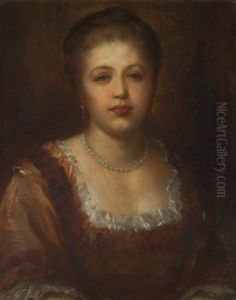Arthur George Watts Paintings
Arthur George Watts, born in 1883, was a British illustrator and painter whose career spanned the first half of the 20th century. Although he is not as widely recognized as some of his contemporaries, Watts made a significant contribution to the art of illustration, particularly in the realm of periodicals and children's books.
Watts began his artistic journey at a young age, showing a natural talent for drawing and painting. He honed his skills at the prestigious Slade School of Fine Art in London, which was known for producing some of the most influential British artists of the time. There, he would have been exposed to a rigorous curriculum that emphasized classical art training, including life drawing and painting from plaster casts, as well as the study of the Old Masters.
During his career, Watts worked extensively as an illustrator for magazines, including the popular weekly British magazine 'Punch', where his work would have been seen by a wide audience. His illustrations often showcased a keen sense of humor and a distinctive style that resonated with the readership. In addition to 'Punch', Watts contributed to other periodicals and publications, which helped to establish him as a versatile and sought-after artist.
Children's book illustration was another area where Arthur George Watts left his mark. His ability to create enchanting and engaging images for young readers made him a favored illustrator for children's literature. His illustrations often contained whimsical elements that captured the imagination, a quality that made his work enduringly popular with both children and adults.
Watts was also known for his poster designs, which were part of a broader movement in the early 20th century that saw the fusion of art and advertising. His posters featured bold colors and clear, readable designs that were effective in catching the public's attention. This work contributed to a golden age of poster design in the UK, exemplifying the artistry that could be applied in commercial contexts.
Despite the prevalence of his work during his lifetime, Arthur George Watts is not as well-remembered today as some of his peers. Nevertheless, his contributions to the field of illustration and his influence on the visual culture of his time make him a noteworthy figure in the history of British art. He passed away in 1965, leaving behind a legacy that, while perhaps not as celebrated as that of some of his contemporaries, remains an important part of the British art historical narrative.









